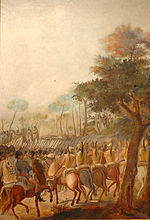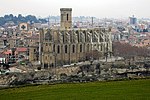Cave of Saint Ignatius
17th-century Roman Catholic church buildings in SpainBaroque architecture in CataloniaChurches in CataloniaManresaSociety of Jesus
The Cave of Saint Ignatius is a sanctuary declared as a Local Cultural Heritage that includes a baroque church and a neoclassical building in Manresa (Catalonia), which was created to honor the place where, according to tradition, Saint Ignatius of Loyola shut himself in a cave to pray and do penance during his sojourn in the city from March 1522 to February 1523, where he wrote the Spiritual Exercises returning from his pilgrimage to Montserrat.
Excerpt from the Wikipedia article Cave of Saint Ignatius (License: CC BY-SA 3.0, Authors).Cave of Saint Ignatius
Camí de la Cova,
Geographical coordinates (GPS) Address Nearby Places Show on map
Geographical coordinates (GPS)
| Latitude | Longitude |
|---|---|
| N 41.7212 ° | E 1.8315 ° |
Address
Santuari de la Santa Cova de Sant Ignasi
Camí de la Cova
08243 (Centre Històric de Manresa)
Catalonia, Spain
Open on Google Maps








